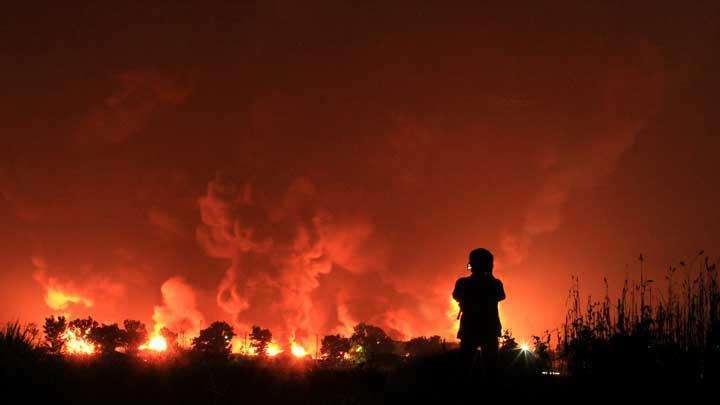Prof. Reynaldo Zoro Reveals How Tropical Lightning Can Burn Pertamina Balongan Refinery
STEI ITB lightning expert Reynaldo Zoro revealed how a lightning strike could burn Pertamina’s refineries such as in Balongan, Indramayu, at the end of March.
According to him, a similar incident had occurred at another refinery, namely in Cilacap. “When grabbing an installation that has a fuel component, there happens to be oxygen, if there is a fire from lightning, it burns,” said the retired professor at the ITB School of Electrical and Informatics Engineering.
He, who was previously active as a lecturer and researcher from the Electrical Engineering expertise group, believed that the Balongan refinery caught fire and exploded after being struck by lightning. He came there to collect the evidence outside the fire investigation team.
Apart from the findings in the field, the assumptions are based on previous events. “There are not one or two incidents of lightning striking refineries in Indonesia, since 1995 the fire caused by lightning in Cilacap has burned almost every year,” he said when contacted Monday, April 5, 2021.
In addition, according to him, the refinery in Dumai has caught fire twice because of lightning, once in Balikpapan, and once in Sorong. So far, according to him, there has been no strong possibility other than lightning. “If you throw cigarette butts like that, it’s not possible,” he said. Meanwhile, security in the oil sector is very tight.
The indication of a tank leak before it caught fire and exploded became another factor to be investigated. “It’s connected to each other, why is it leaking, why is it burning, that’s what we sort, try to evaluate and there must be a scientific reason,” said Reynaldo.
According to him, the Pertamina refinery has used standard lightning rods according to international regulations. However, the device is considered insufficient to protect tanks that are 4.8 millimeters thick, because the standard of protection refers to lightning in subtropical countries. Meanwhile, lightning conditions in Indonesia are unique.
“Almost all over Indonesia, the lightning charge is large, the amplitude is high, the waves are steep, then the destructive power is large, that’s called tropical lightning,” he said.
Tropical lightning, according to him, has been studied since 1992. Normally the electric current from tropical lightning is with a 50 percent probability of 40 kiloamperes, 100 kiloamperes with a 20 percent chance of appearing, and less often or 5 percent reaching 200 kiloamperes. The maximum current of tropical lightning is up to 900-kilo amperes. “It was recorded in 1995 in the Cinere area, Jakarta,” said Reynaldo.
According to him, there needs to be an increase in tank security against lightning strikes because standard antidotes are not enough. The simple goal is so that the structure of the tank in the refinery is not passed by lightning currents.
ANWAR SISWADI, quoted from tekno.tempo.co

